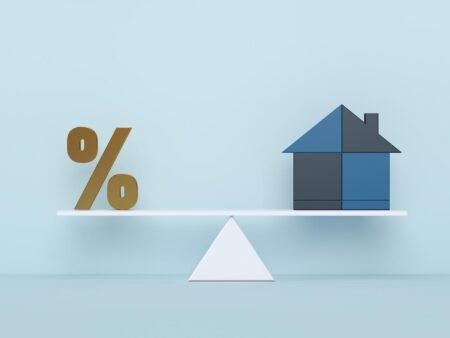It can be challenging to buy a house with a low income, because depending on the circumstances, a lender may not approve you for a mortgage. A low salary also makes it difficult to save enough for a down payment and closing costs. Fortunately, there are loan programs and other forms of assistance that can help make your homeownership dreams a reality.
Read about the best mortgage lenders for low and no down payments.
Lenders assess your creditworthiness to determine whether to approve you for a mortgage and, if so, at what interest rate. They also set a minimum credit score requirement for mortgage approval. So, you want to know your score before shopping for a mortgage to avoid any surprises during the application process.
A high credit score could increase your chances of approval, even if your income is low.
Check your credit score with the credit bureaus Equifax, Experian, or TransUnion. If you notice any errors on your credit report, report them so that your credit score can be corrected. You can also work on improving your credit score by paying down debts or making on-time monthly payments. The higher your credit score, the better deal you’ll get from a mortgage lender.
Lenders also assess your debt-to-income ratio (DTI), which is the minimum amount of debt payments you owe each month compared to your monthly pre-tax income. When it comes to your DTI ratio, there are two numbers you should understand:
-
Front-end ratio: This number represents the percentage of your monthly income that specifically goes toward home expenses. Divide your total monthly housing expenses by your total gross monthly income to get your front-end ratio. For conventional loans, mortgage lenders often prefer a front-end DTI ratio of 28% or less.
-
Back-end ratio: The back-end DTI ratio refers to how much you spend on all monthly debt payments (including your mortgage) compared to your monthly income. Divide your minimum monthly debt obligations — on your home, car, and credit cards, for example — by your monthly income. The sweet spot is 36%, but some lenders accept DTIs as high as 50%, depending on the loan program.
The 28/36 rule is a popular DTI ratio calculation for lenders, but it’s not a hard and fast rule. The lower your ratio, the more likely a mortgage lender will approve you for a mortgage, even if you don’t have a high income.
To lower your ratio, pay down some debts or increase your earnings before applying for a mortgage loan.
If your credit score and DTI ratio are in good shape, the next step is to figure out your home-buying budget. Use a calculator to determine how much house you can afford. Beyond the monthly mortgage payment, which includes principal and interest, be sure to account for the following costs:
Utilities, maintenance, and repairs don’t make up your monthly mortgage payment, but you should still factor in these costs when deciding whether you can afford to buy a home on your income.
Along with the down payment and closing costs, take a look at your monthly budget to determine how much you can afford to spend on housing-related expenses. If you don’t have a budget yet, reviewing your most recent bank statements is a good place to start until you can establish a spending plan.
4. Save for the down payment and closing costs
Now that you’ve done the math to get a sense of your budget, start saving for the down payment and closing costs so you can comfortably afford a home.
Again, you’ll likely need a down payment unless you qualify for a 0%-down mortgage, such as a VA or USDA loan. Thankfully, the days of having to put 20% down to buy a home are long gone, and there are options that require as little as 3% down.
Not sure where to start? Create a realistic savings plan based on the disposable income in your budget. And again, don’t forget about closing costs, which typically range from 2% to 5% of the loan amount.
5. Shop for a loan and mortgage lender in advance
Conduct research on the best mortgage lenders for your specific situation and priorities. Reach out to a loan officer with several lenders well in advance to discuss your situation. They can review your profile and determine if you prequalify for a mortgage, and if so, what loan amount and terms the company could offer you.
That way, you can identify areas that need improvement to get approved if you don’t yet qualify, or to get a loan offer with competitive terms and a low mortgage rate.
If your income is too low to secure a mortgage on your own, consider adding a co-signer to your mortgage. When you apply, the lender will consider the financial and credit profiles of both you and the co-signer to make a decision. Co-signing with a loved one who has a higher income and a strong overall financial profile can help you qualify.
Keep in mind that co-signers share equal responsibility for the home loan. Therefore, if you default on the mortgage payments, they must continue making payments to keep the loan in good standing. Communicate to ensure you’re both comfortable with the arrangement.
Government-backed mortgages are generally more flexible than conventional loans, and can help get you into your first or next home. Consider the following options:
-
FHA loans: Loans insured by the Federal Housing Administration cater to borrowers with varying incomes and have flexible lending guidelines. You can get approved with just 3.5% down and a credit score of 580 (or 500 with a 10% down payment).
-
VA loans: Eligible active-duty service members, veterans, and surviving spouses can access loans insured by the U.S. Department of Veterans Affairs to buy a home with no money down. There is no mortgage insurance, which makes the monthly mortgage payments more affordable.
-
USDA loans: Mortgages backed by the U.S. Department of Agriculture cater to low- to moderate-income buyers looking to purchase in eligible rural areas. Interest rates are low, and there are no down payment requirements.
Fannie Mae and Freddie Mac also offer the HomeReady and Home Possible loans, respectively, which require just 3% down on conventional loans. You can use gifts and grants to help cover the down payment and closing costs.
Contact housing agencies in your state and local area to learn more about programs designed to assist low-income and first-time home buyers. You may be eligible for grants or other forms of assistance to help cover the down payment and closing costs.
The Housing Choice Voucher (HCV) homeownership program is also available in select markets nationwide. If you are a current Section 8 voucher holder, you can use it to buy a home and receive monthly payment assistance. Contact your local housing authority to learn more.
Some mortgage lenders, including Rocket Mortgage and New American Funding, also offer programs to assist low-income borrowers. It’s worth inquiring with your chosen lender, as they may also have resources available to help you get into a new home.
Find the best mortgage lenders for first-time home buyers.
There isn’t a specific minimum income requirement you must meet to qualify for a mortgage. That said, lenders have other guidelines that determine your eligibility, and an income that is too low could mean your debt-to-income ratio is too high to qualify.
For those with a low income, it’s possible to buy a home with no money down. Consider a USDA or VA loan, as both offer 100% financing. If you don’t qualify, research mortgage assistance programs that can help cover the down payment and closing costs.
You can buy a home with little to no money up front. To do so, you’ll need to qualify for a low-down-payment mortgage loan, or one that doesn’t require a down payment, such as a VA or USDA loan. You can also inquire about rolling your closing costs into your loan balance so you don’t have to pay these on closing day. This will save you money in the short term, but because the closing costs become part of your loan principal, you’ll pay interest on the money and ultimately pay more in the long run. Still, this tactic can help you get your foot in the door as a homeowner and start building wealth by buying a house.
Laura Grace Tarpley edited this article.
Read the full article here












